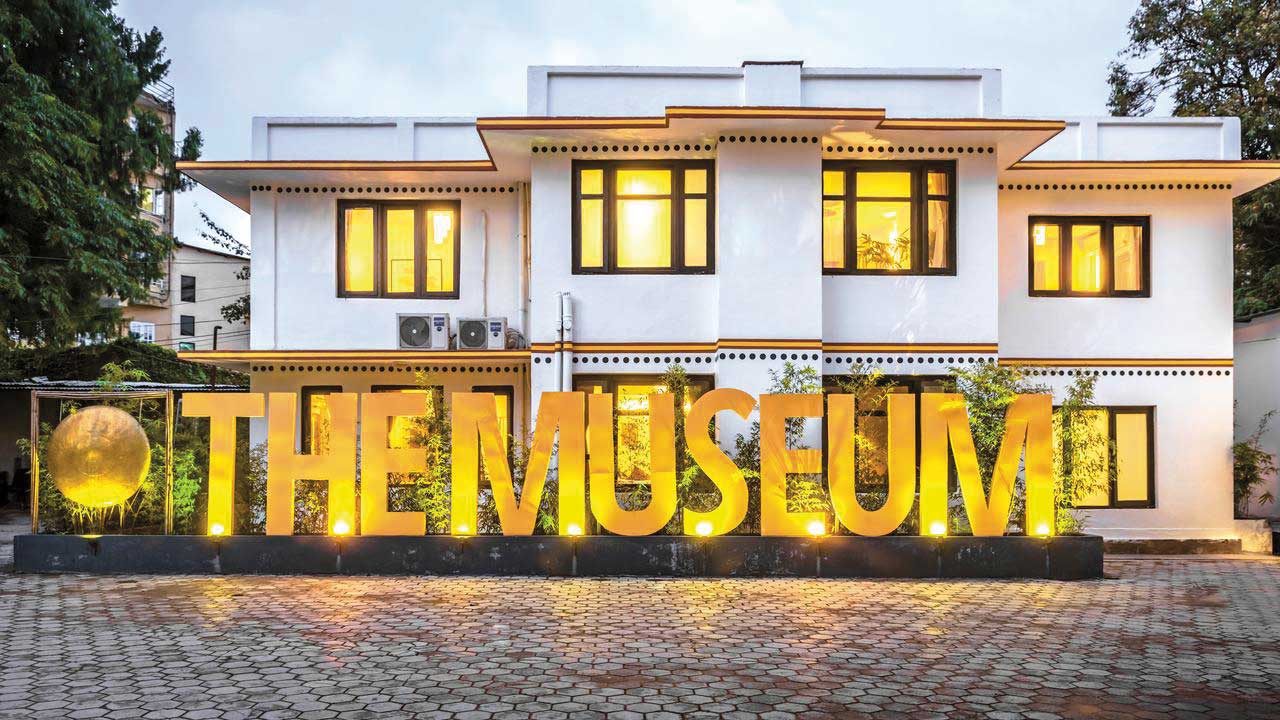
Having spent a few weeks backpacking around Nepal, including three weeks in rural Helambu sleeping on wooden slats, I decided it was time to splash out and stay somewhere a little more up-market. I was growing frustrated at drunk tourists wandering into hostels at 3 am with some dog they found on the street (this actually happened!) and so I began the search to find a hotel which was away from the bustle of Thamel, as well as a little bit unique.
That’s when I stumbled across The Museum. From the outside the hotel looks striking, with ‘The Museum’ written across the front in bold lettering. Nestled away from the touristy hubs, its location in Panipokhari was the perfect spot for me to escape from street vendors and the noise of places I’d stayed in before.
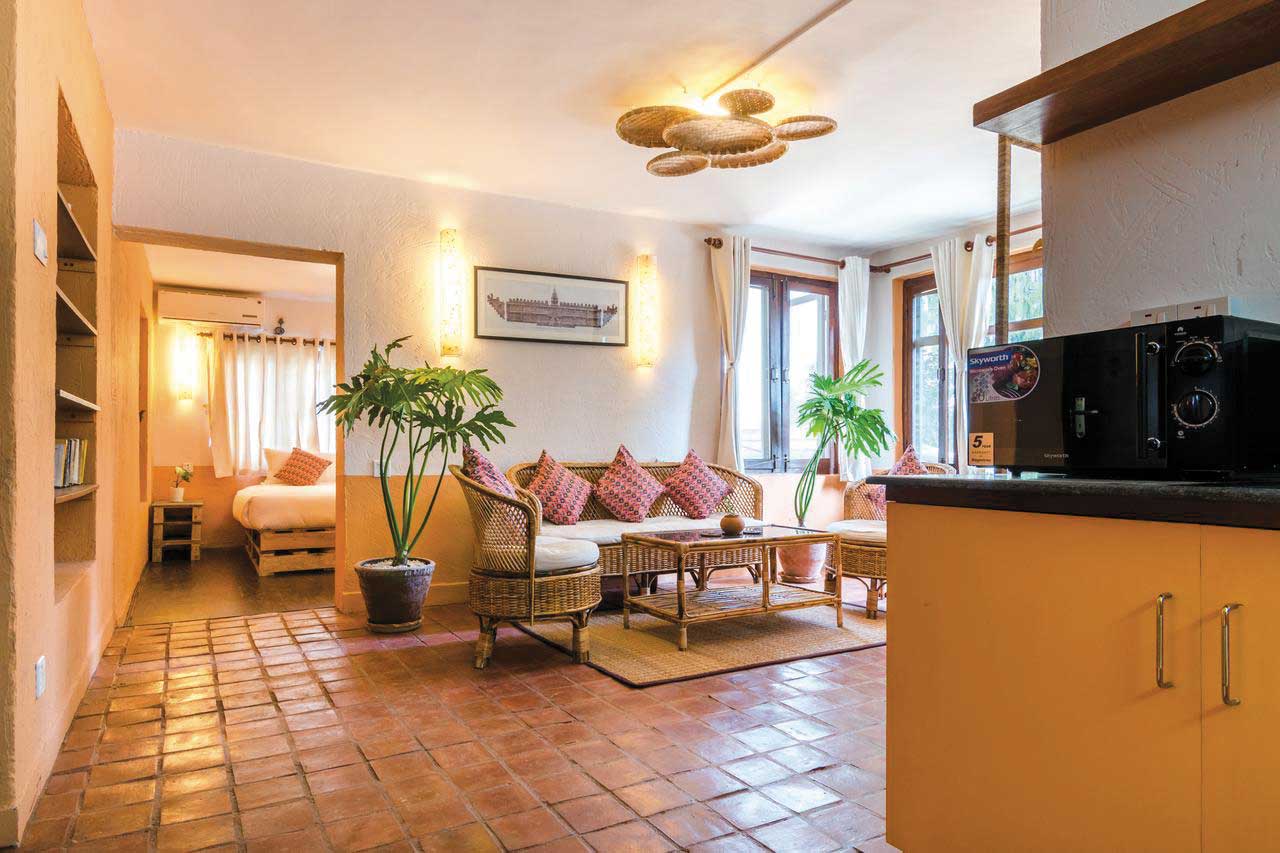
As part of Le Sherpa’s property, the hotel has an undeniable focus on promoting local craftspeople in their traditional practices. They do this very uniquely by theming each room around a craftsperson, displaying their work. The first double room I stayed in at the hotel featured Hom Basnet, a stone mason whose pieces decorated and lined the walls. Despite the encroachment of modern structures and architectural styles, stone art is for many still a crucial part in defining the aesthetic and character of Kathmandu. I saw lots of stone masonry whilst on my travels, so it was lovely to see traditional crafts in my room too.

During my long stay, I later moved into a larger twin suite which featured the incredible work of Indra Bika. Dividing my bedroom from a separate seating area was a glass cabinet with three of his handmade khukuris suspended in a line. Seen to be a true master of his craft, Indra is apparently one of only a handful of blacksmiths left in Kathmandu who still make the khukuri from scratch. As the weapon of choice of the Gurkka warriors, khukuris are traditionally seen as a symbol of pride, bravery and loyalty in Nepali culture. During my three-week homestay in Helambu though, local women could also be seen using khukuris to peel onions, cut garlic cloves and tend the fields, proving them to be a true multi-utility tool in rural Nepali households
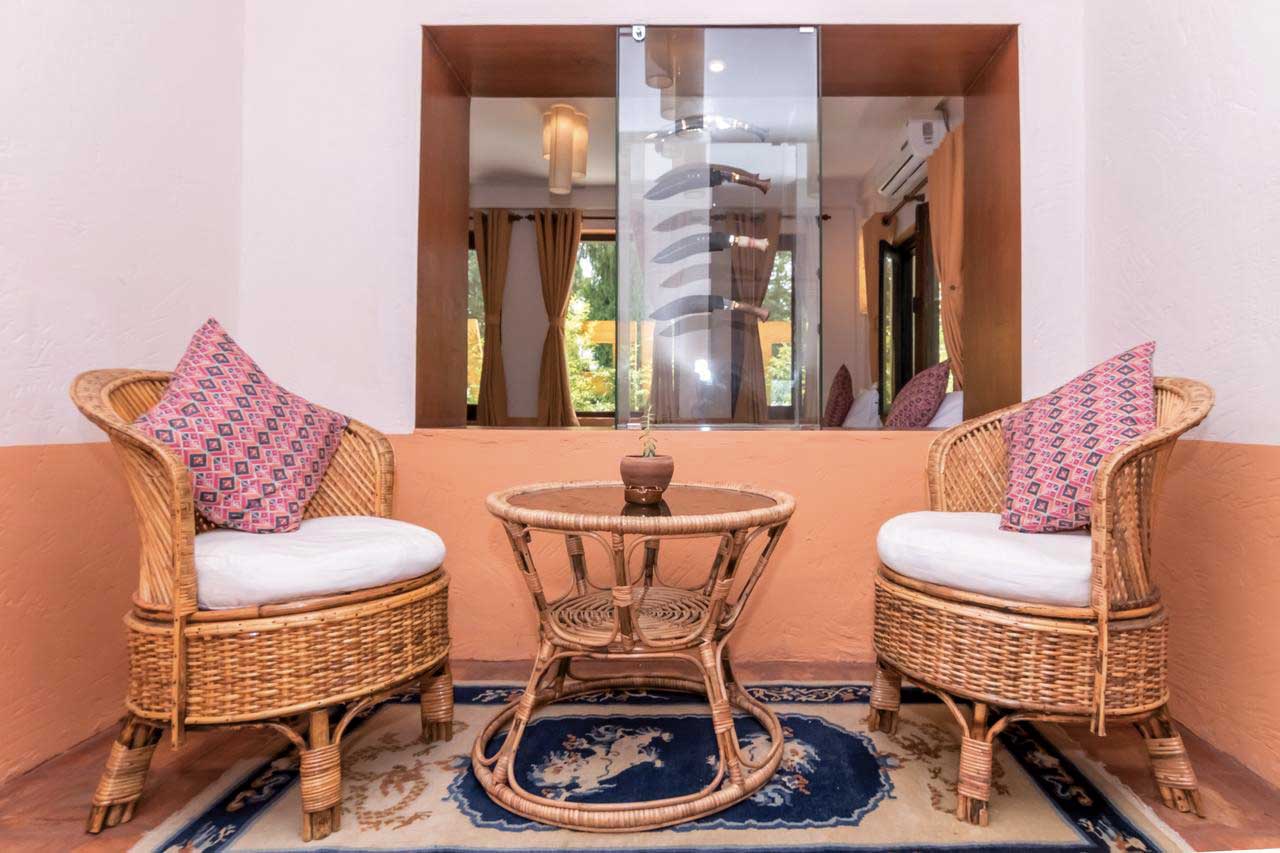 .
.
Having seen the amazing work of both Hom and Indra, I decided to look at The Museum’s website to see what other artists were featured. One room included the artwork of thangka specialist Man Bahadur Tamang, who has over three decades of experience as both an artist and thangka teacher. Centuries old, thangka’s origins are thought to be traceable to when Tibetan Buddhism was first introduced to Nepal. Depicting deities, mandalas and the Buddha, they are sometimes used as the centrepiece for religious ceremonies and most uniquely, the process of painting them can be used as a meditation tool to the path of enlightenment.
Another room featured the ancient art of pottery, displaying the work of Narayan Prajapati, who comes from an ancient lineage of potters from Thimi, a pottery village in Bhaktapur. He works using a Nepali pottery wheel and adorns most pieces with traditional designs. While much of what he produces are quintessential decorative pieces, pottery has been used as a practical way to transport water, make liquor and serve food for centuries. Intrigued by the craftsmanship on display in the rooms, I later booked a traditional pottery course with Narayan. This experience made the artwork of each room expand beyond just the walls, and I will have fond memories of meeting Narayan, learning and even trying his craft myself.
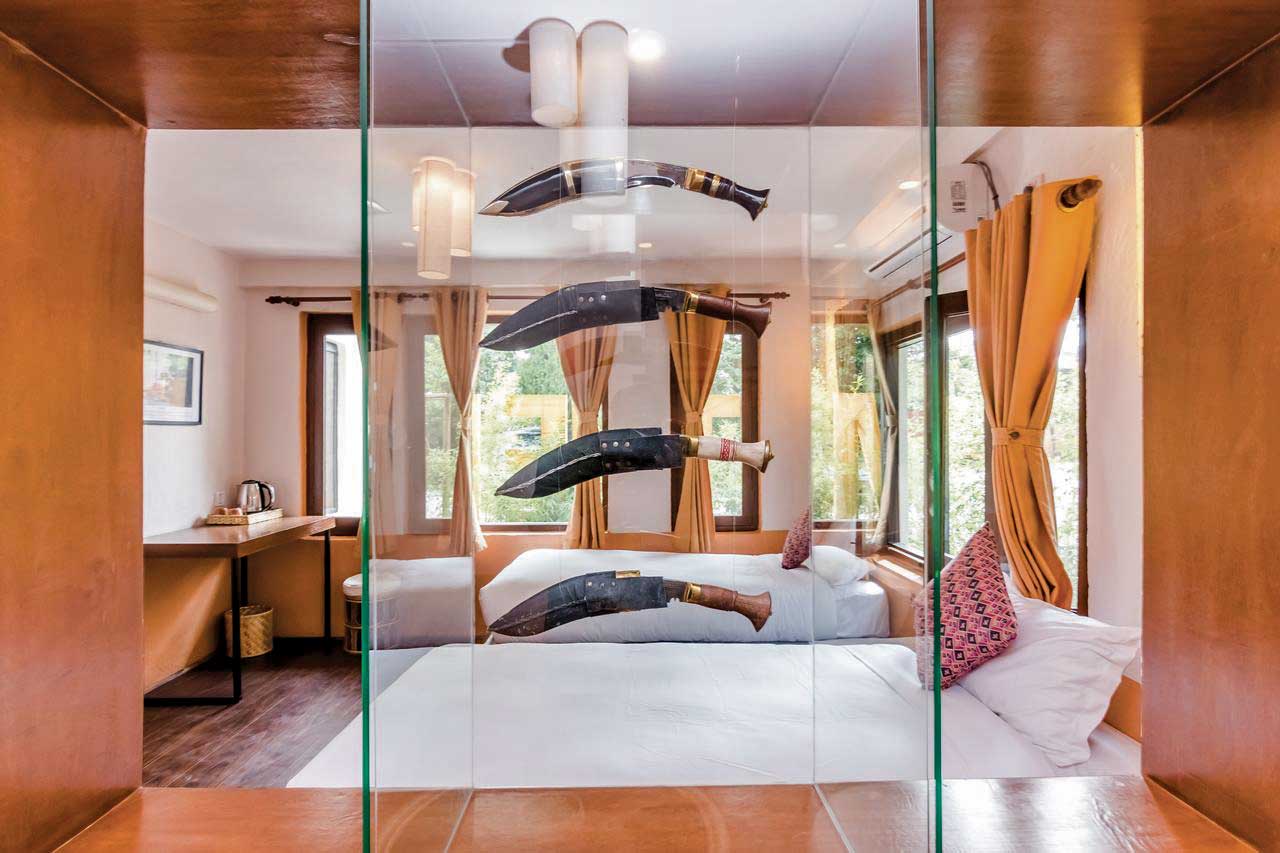
Local craftsmanship at The Museum was present not just in the rooms of the boutique hotel though, but also in the surrounding estate of Le Sherpa, such ‘The Local Project’, a shop that provides a platform for native and indigenous handmade Nepalese products. Based around an ethic of sustainable livelihoods, the project showcases high quality, locally made products, benefiting individual craftspeople in the process. I really enjoyed wandering around the boutique clothing stores, art gallery and shops, looking at products which are a true display of Nepalese culture and craftsmanship.
The Museum is also located on the same site as Le Sherpa’s weekly farmers market, which hosts local food makers and artisans--an event I attended three times and enjoyed thoroughly, buying locally made tea, spices, plants and fresh food products like homemade quiches. Furthermore, the event builds upon the ethos of the adjacent Le Sherpa restaurant itself, which seeks to use only organic, fresh and local food products.
With breakfast included everyday, I ate each morning at Everfresh café, beautifully designed with hanging plants and large glass windows which open up to allow in natural light and air. The coffee was amazing and I tried around four different breakfasts, all beautifully presented like a piece of art. As an admirer of recycled and upcycled products, I was also very impressed to see a table and chair set in the café made by Tyre Treasures, a company which upcycles old tyres often sent to landfill, turning them into stunning home products. This demonstrated to me the deep running commitment of The Museum and the Le Sherpa estate in general to provide a platform for local artisans.
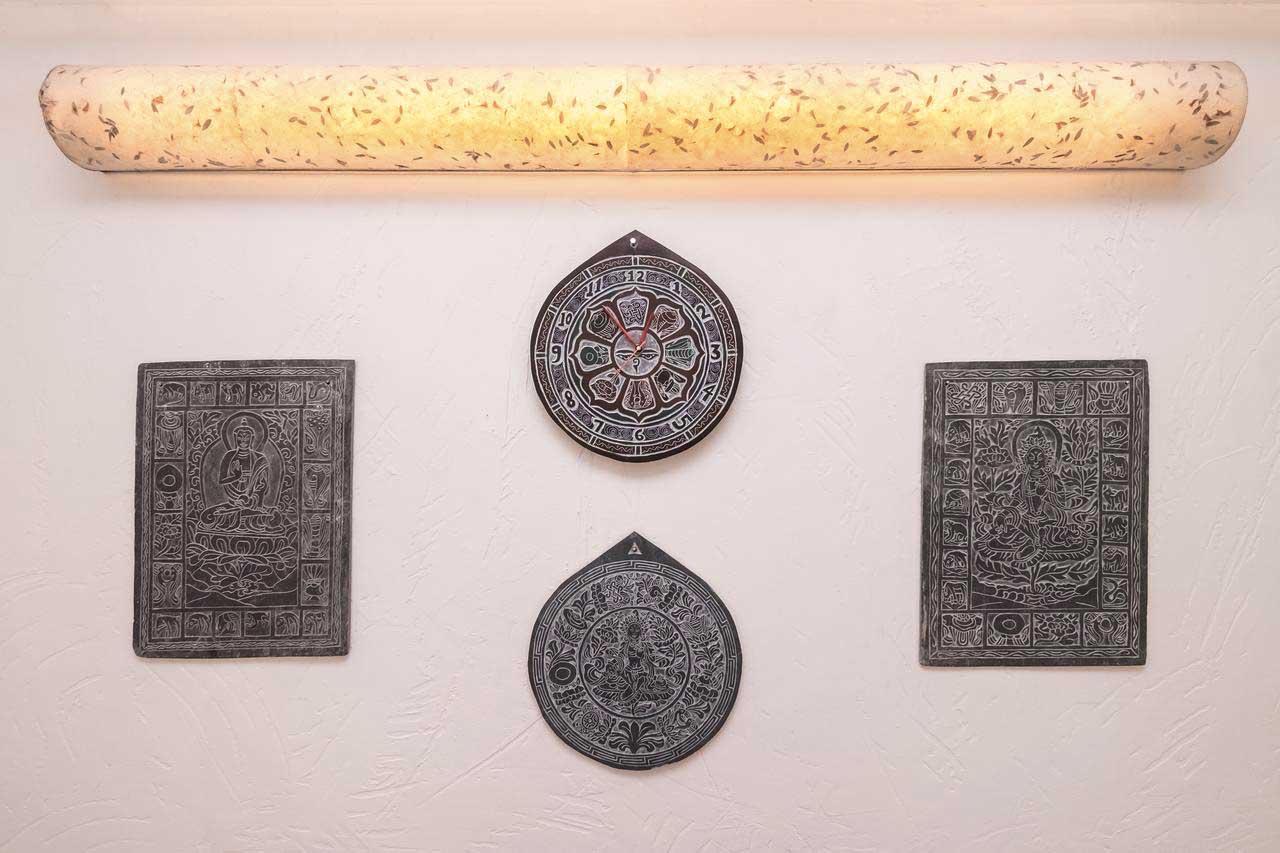
I stayed at The Museum for just over half a month and found it the perfect place to give me some headrest and the time needed to escape the bustle of Kathmandu. It also became one of the most memorable parts of my long stay in Nepal, as it was through looking at the artwork in the rooms that I was able to participate in a traditional crafting course with Narayan--an opportunity I would have otherwise known nothing about and which transformed my search for a placeto stay into a cultural encounter.











